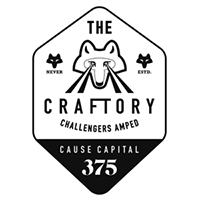Weniger ist Mehr
Why three German words are the only challenger brand strategy you’ll ever need
Ludwig Mies van der Rohe was a famously difficult man to get along with. Arguably one of the finest architects of all time, he was cantankerous, mercurial and intimidatingly bejowelled, forever blowing plumes of thick smoke from one of his beloved Cuban Robustos. Other than a string of exquisite buildings, he gifted mankind an enduringly poignant insight, delivered with fitting clarity: “Weniger ist mehr”, he bellowed, “Less is more”. Three words that heralded the end of indulgent Victoriana, and ushered in the clean, focused lines of the Modern era. Van der Rohe’s insight around the augmenting power of simplicity revolutionised architecture and design, but it is just as devastating as a guiding principle, 80 years on, for the complex choices faced by the insurgent challenger entrepreneur.
True challenger brands are driven by a burning urge to bring about radical change in the categories they serve – to take them to a better place for the benefit of consumers, the planet or society. The trouble is that there are a great many wrongs to right: to make better use of the planet’s resources, to democratise access, debunk taboos, deliver wellness, champion self-esteem, progress society – the list of causes to fight for goes on for exhaustingly long. Especially so if conflated with the political anger that permeates our troubled zeitgeist. And therein, regrettably, lies the trap for challenger entrepreneurs – because when trying to take on the fight for all, they often risk winning for none.
Time and again, we see talented entrepreneurs setting forth on remarkable missions with outstanding products, only to see their potential diminished through confusion: they may for example be battling harmful stereotypes with a set of brilliantly simple, demystifying products, but then they lose half their potential consumer base through overly partisan political messaging. That’s a shame. Because if the brand’s mission is to reject stereotypes, then why create a new division along political lines? After all, the victims of stereotyping come from across the spectrum, and whether politically they sit on one side of the dividing line or the other should not determine whether they are allowed to be set free from the stereotypes they’re subjected to.
The issue of confusion isn’t limited to political biases. It is as unhelpful for ice cream that is miraculously healthy but doesn’t also have to shout about being cheap (Why is it cheap? And can it really be healthy if it’s also cheap?), as it is for beauty products that are championing diversity but don’t also have to stress that they’re vegan (Why are they vegan? And do I need to be vegan to buy them?).
Consumers rarely cope with more than one message at the same time when considering product choices, so a swiss-army-knife approach to bundled righteous claims frequently ends up scaring off more consumers than it attracts. The Craftory’s counsel is consistent for all brand and product choices in this respect: fight one battle at a time, well and with clarity, rather than take on the world.
So when in doubt about how to build your challenger brand or design your product range, just picture Mies, frowning in his Corbusier chair, and ask yourself what counsel he might have given. His words would have been few – but all the more impactful for it.
Ernesto Schmitt is co-founder at The Craftory, the brand-new counter-corporate anti-VC on a $300M mission to back the world's boldest insurgent challenger brands in the consumer goods space.


